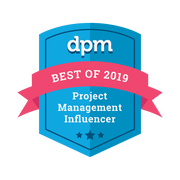Many project managers – and especially those with a technical background – are experts in their field and tend to give advice more than they coach. When we give advice we go into problem-solving mode and come up with instructions and ideas for how the other person can move forward. It makes us feel great to pass on our knowledge and to help someone progress a task in an effective way.
But when we give advice we don’t empower people to grow and to find their own answers. We are effectively imposing our solution to their problem, which isn’t an effective way to get the other person to take ownership. Telling others what to do is appropriate when we’re talking about a straightforward task. For instance, if a team member asks you where the latest status report is, tell them! The same applies during a crisis. If the building is burning, tell people to get out! But if a team member is looking for guidance on how to conduct a meeting, how to approach a stakeholder or what their next career move should be, it’s an opportunity to enter into a coaching conversation.
Ask open questions
If coaching isn’t about giving advice, then what is it? It’s about helping the person in front of you to see a given situation in a clearer light so that they feel empowered to take the next steps. This means that the person you’re coaching gains a better understanding of what the real problem is, what the options are for solving the problem and what action they can take to overcome it. The way in which you can help a team member gain this insight is to ask lots of open questions:
Could you tell me more about the issue?
What do you feel is wrong?
What would you like to achieve?
What have you already tried?
What else?
What worked? What didn’t work?
What steps can we take to change this?
Which option would be fastest/easiest?
What will you do right now?
As you can see you effectively switch mode from telling to asking and listening. The listening part is important, as it enables you to really grasp the situation and see it from the other person’s point of view.
Let’s imagine that your team member asks you how to run a working group meeting. Instead of telling him how you would do it, bounce back the question by asking: What would you like the outcome of this meeting to be? What was discussed at the last meeting? What ideas do you have? What else? The conversation may last a bit longer than if you had simply given the team member instructions, but the outcome is likely to be far more rewarding and effective for both of you.
Begin to practice every day
The best way to become a better coach is to practice as often as you can. Coaching isn’t just a tool you should use for the big conversations. It’s a way of life – a leadership style, which you can use in most situations. When people ask you for advice see it as a coaching opportunity and resist the temptation of telling them what to do. Give people your full attention. Listen at the highest possible level and ask open questions that shed light on the topic. Can you explain the situation in more detail? What’s the real challenge for you here? How can I help? Ask “how” and “what” questions and avoid asking “why”. Why often makes people feel defensive, which defeats the purpose of a coaching conversation.
If you have a tendency to interrupt people, try to put your tongue “on pause”. You do this by drawing you tongue backwards so that it neither touches the upper part, nor the lower part of your mouth. Try it now! Let your tongue hover in the middle of your mouth. What you’ll find is that you’ll be less likely to speak as your tongue is now in a neutral position.
If you’re interested in learning more about coaching skills in a professional environment, check out John Whitmore’s book: Coaching for Performance.








 RSS Feed
RSS Feed